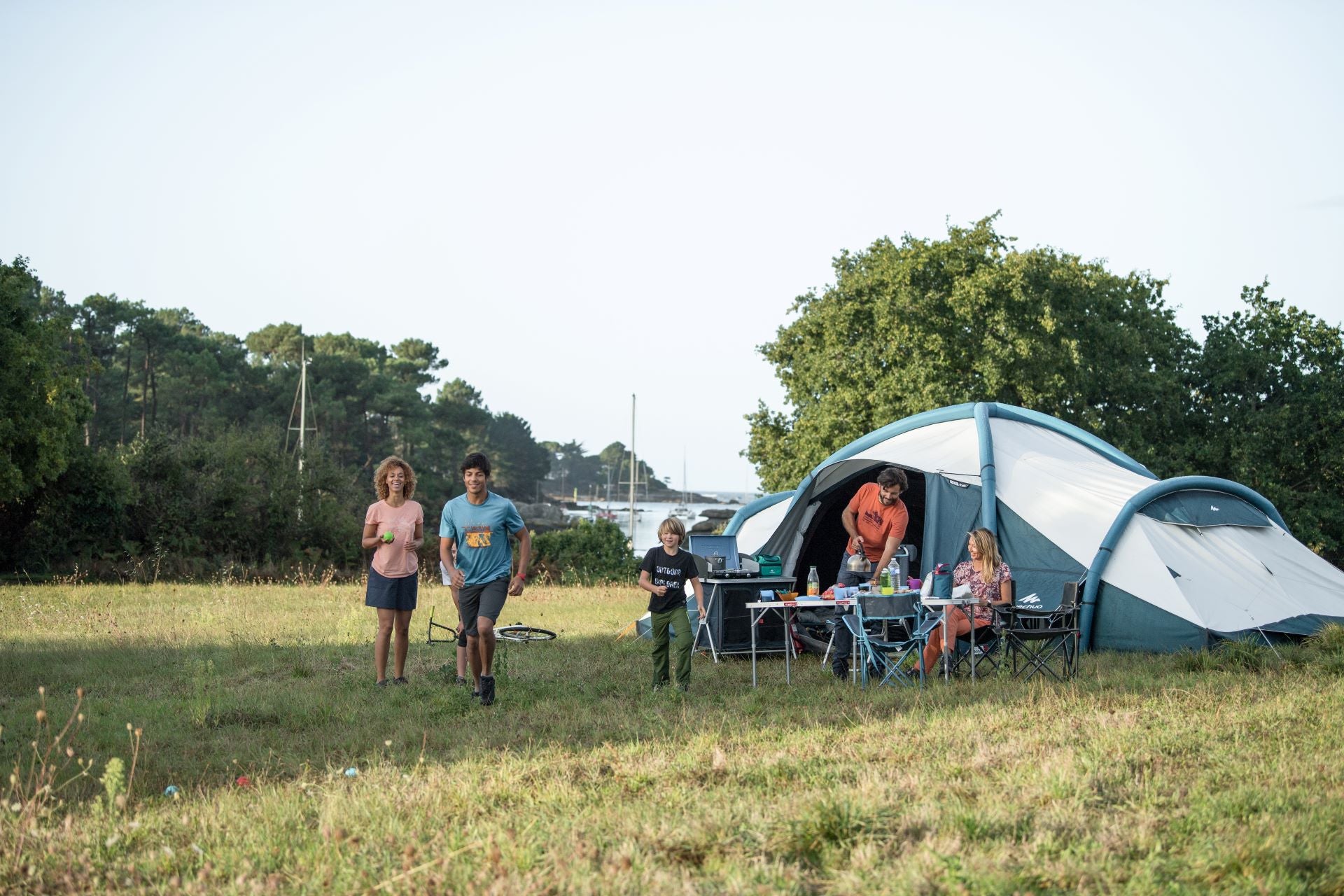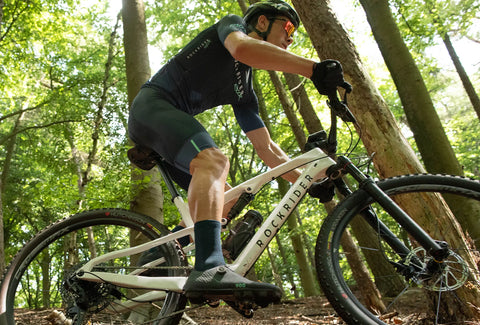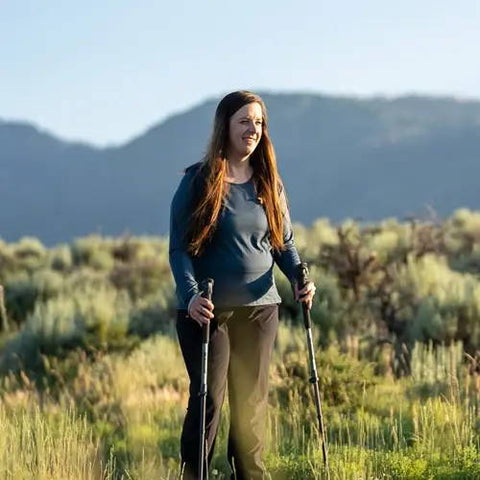You want to head out into the great outdoors with your family, but there’s one problem: What tent should you get? This will depend on a lot of factors-number of kids, age of family members and type of camping trip you’re planning on going on.
This guide will help you pick the from the large variety of family camping tents.
Getting Started
A great family camping tent is durable and well made to withstand rugged use. It’s also comfortable, versatile and fun for kids!
The first consideration is durability-as playful kids can put extensive strain on a tent in unpredictable ways. Both the zippers and seams should be well crafted and tripping hazards should be minimized.
Comfort is important too. You’ll want to have plenty of space for both you and your kids to sleep, play and hang out in-because what if it rains all weekend and you need to stay together inside? Some tents even have two rooms for a little privacy, or even a time-out if things get a little too rowdy.
You’ll also want to consider versatility. Unless you are going to be camping in the same campground, in the same weather, during the same season every year, you’ll want your tent to be able to handle a variety of situations. Some tents have vestibules that can be fully enclosed or opened up, depending on sun or rain.
Lastly, you want something that’s fun for the kids (and the parents!). It’s nice to pick out a few options and let your kids be part of the decision. Some tents have different color options, which is a great way to include the little ones.
Camping Tent Sizes
The first thing you should ask is what size of tent do you need. Big tents are perfect for family camping because there is plenty of space for you, your family and your gear, but they aren’t perfect. They are heavy and bulky and they can take a lot of time to put up. If you’re planning on backpacking, of course, you certainly don’t want to carry a car camping tent.
Most tents have a suggested sleeping capacity. However, there’s no industry standard for per-person tent dimensions, so they can vary. You can, however, assume that there will be a tight fit. If you think you’d like a little bit more space, choose a tent with a capacity of one extra person.
Tent Styles
There are two styles of family camping tents: Dome and tunnel. Dome tents feature sloped walls that meet at an apex. They are strong in bad weather, but have less livable space than other tents. Tunnel tents offer larger living spaces with large front opening doors allowing for lots of light to enter.
Tent Layouts
Some family camping tents offer separate bedrooms, with or without easily removed dividing walls. You might consider a separate room so you can let your kids go to sleep earlier than you and not disturb them when you’re going to bed later. If you have older kids, they might enjoy the privacy that a pod or bedroom provides. Of course, you could also get your older kids their own small tent for more independence.
Number of Doors
It seems obvious, but you have to consider how you’ll get in and out of the tent. Families with small children might want a single entrance, so you can keep track of everyone. But families with multiple children of varying ages might want a few doors so everyone can get out without crawling over their sleeping family members.
Many tents offer vestibules on multiple sides. These semi-enclosed spaces allow for storage of wet gear, protection from the sun and the rain, and extra living space, if needed.
Ease of Setup
Some family tents require two adults to get them up. What if you’re the only adult around? You’ll want to make sure that setup and breakdown requirements meet your needs. Sometimes it’s easier to have two smaller tents, instead of one big one, for this reason. Check out Decathlon's Air Seconds family tents, designed for easy set-up, with air chambers instead of poles.
Also, don’t forget to try setting the tent up at home before you head out on your first trip. It’s really stressful to be attempting to set up a tent for the first time as a storm rolls in after a long day of driving to the campsite!
Tent Seasonality
Next you’ll want to consider the tent that’s right for the conditions you’re heading into. There are usually three types of tents: 3-season, 3-4 season and 4 season tents.
- 3 Season: Lightweight, these shelters are designed for temperate conditions. There is a lot of mesh used so you get plenty of airflow. However, they aren’t meant for violent winds or winter conditions.
- 3-4 Season: Tents made for year-round use combine ventilation, strength and warmth. They have a few more poles than 3-season tents to offer durability in stronger storms.
- 4 Season: Designed for mountaineering, these tents are made with more poles and tougher fabric. They usually have very little mesh, making them uncomfortable in warmer weather.
Tent Features
Picking the right tent features for your family can be a challenge, but it’s important!
- Height: Whether you like standing up when changing or don’t mind being cramped to save some weight, the height of a tent can tell you a lot.
- Length: You want to make sure your tent is long enough for your tallest person. If you’re planning on keeping your gear in the tent with you, you’ll also want extra space-which could mean additional length.
- Doors: The number and position of doors can make or break a camping trip. If you’re camping with others, you’ll want multiple doors so you don’t have to crawl over one another for late night bathroom trips.
- Poles: More poles, generally speaking, mean a harder setup. Poles that use clips are also easier to maneuver than poles that thread through pole sleeves.
- Rainfly: Pick your rainfly based on what weather you’re planning on encountering. Roof-only rainflies are great for views, but full-coverage rainflies will offer more protection.
- Materials: Higher-denier fabric tents and rainflies are more durable than lower-denier ones. Also note that seam tape and higher-denier floors make the odds of leakage less likely.
- Vestibules/Garage: If you have a lot of gear, pick a tent with large vestibules or a garage-it makes a difference.
- Interior Loops and Pockets: You can stay organized with interior pockets and loops to hang lanterns.
- Footprint: A footprint goes under your tent floor to protect it from the ground. They are a good investment, and allow you to keep your tent for longer.











